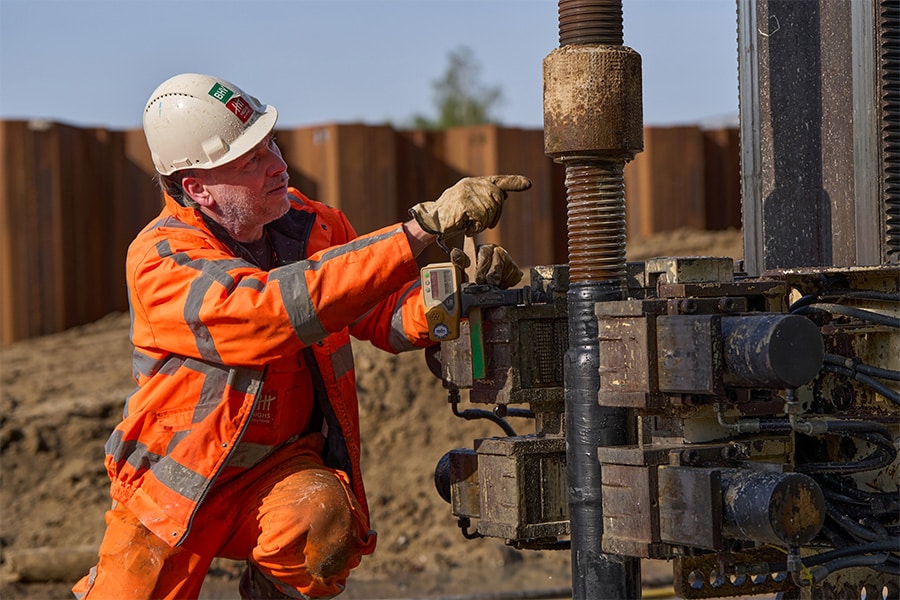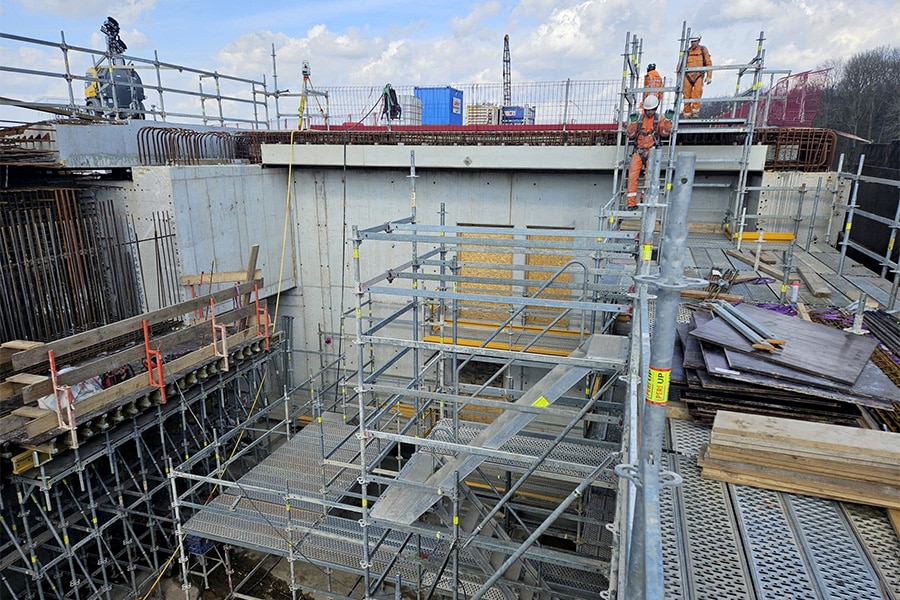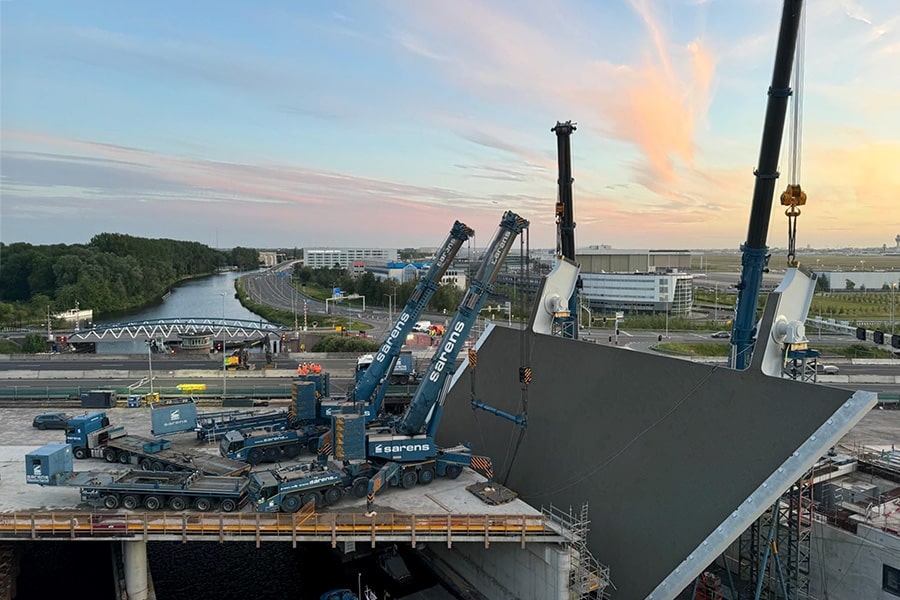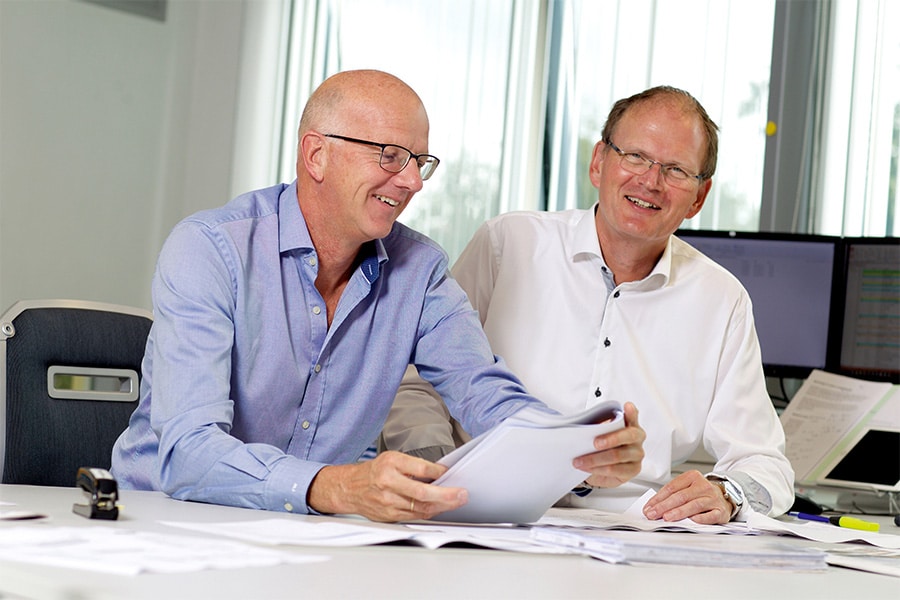
Data-driven asset management
For more efficient and predictable management and maintenance
A tremendous amount of data is generated during the construction of a bridge, for example. Think of location, dimensions, configuration of applied systems, material origin and use, etc. All that data is essential for more efficient, sustainable and predictable management and maintenance. However, until a few years ago, this link between the various phases, construction and maintenance, was often not made, resulting in the loss of useful data. Fortunately, that realization is now there, and more and more efforts are being made to efficiently share asset data. CGI is one of the leaders in this field. From its own iAMLAB -the Infra Asset Management Lab- CGI is experimenting with making it possible to share data between different market parties and different construction phases, in a standardized way.
Many parties are involved in the various life phases of an asset (design, construction, maintenance, renovation, demolition), begins Laurens Lapré, Vice President Consulting Expert at CGI. "Information created at the beginning of the life cycle, you also need it at the very end. Data by no means always flows from one phase to another. That makes you miss data in the maintenance phase that was gathered during the construction phase. The solution? Simplify the sharing of data between client and contractor in the various phases of an asset. And preferably in a standardized way."

iAMLAB
According to Lapré, quite a lot is already being done in the built environment to arrive at standards, driven by large infrastructure projects and the many sensor data sources now becoming available. Rijkswaterstaat, too, has started a program to achieve data-driven asset management through data sharing and tapping new data sources (see box, ed.). The data from systems, measurements and sensors are essential for this, but the information is often not in the hands of one party. You will have to bring data from multiple parties together to arrive at an overall picture. "We do that primarily in our iAMLAB. In a lab situation, we are able to tie different techniques together, to
trial and combine it with asset data. We can then make a good assessment of whether the technology is now ready to be deployed on a large scale in large organizations. Living labs like this are essential to test the chain cooperation and the sharing of data and to make the value of this sharing visible to all parties involved. After all, that support will determine whether it will actually be implemented later in practice."
Laws and regulations
Getting the technology working is only step one, Lapré acknowledges. "The next step is to embed the method into the process steps. You can make a fantastic model that predicts something, but if regulations state that a physical on-site inspection is a requirement, such a predictive model is of limited use. There is still a lot of discrepancy between what is possible from technology and the extent to which that fits into current processes, given the laws and regulations. An important task for our iAMLAB, therefore, is to explore the extent to which regulations and processes permit the use of new technology. And especially what is needed to achieve large-scale deployment. Fortunately, there is a lot of interest from Europe in achieving broad European agreement systems, working on data standards for certain domains. So also how you can link different data together in a federative way, so that data can be exchanged in a secure way and autonomy remains with the supplying organization. CGI is also closely involved in this." A similar initiative at the Dutch level in construction is the Digitaal Stelsel Gebouwde Omgeving (DSGO), a set of uniform agreements, which ensures safe, reliable and controlled access to data in the design, construction and engineering sectors.
Information has to be found before you can use it. "Often the information is there, but hard to find. Or its quality is unknown. Everyone has to reinvent the wheel every time. That's why we only encourage initiatives like the DSGO or at the European level the International Data Space initiatives," Lapré says. "It's much easier to hitch a ride on a network. Often you get access to information you didn't know was available. Data starts flowing much more that way and actually delivers something for all parties."
Data-driven Asset Management according to Rijkswaterstaat
By sharing existing data on Rijkswaterstaat's assets and using new data sources, Rijkswaterstaat and five managing contractors want to work together towards better data-driven asset management. This initiative is laid down in a cooperation agreement, which was recently signed during InfraTech 2023 in Ahoy Rotterdam.
Data-driven asset management makes management and maintenance of bridges, tunnels and locks more efficient and predictable. Smarter use of existing data and the tapping of new data sources help to balance performance, costs and risks in asset management. Together with private parties, knowledge institutions and other public authorities, Rijkswaterstaat is exploring and exploiting the possibilities in the Data-Driven Asset Management (DGAM) program.



